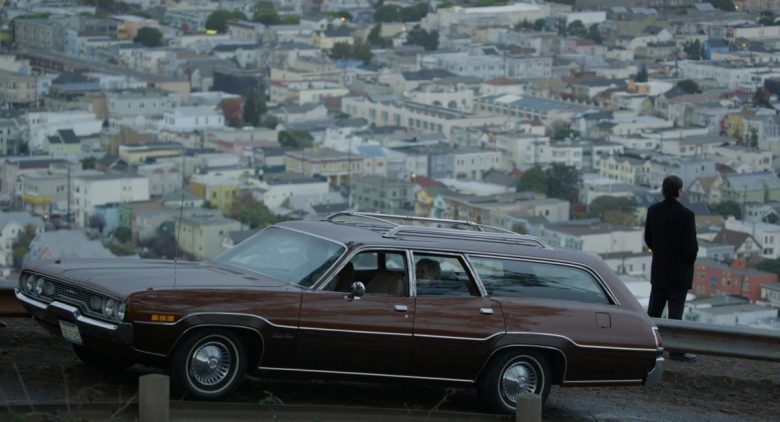
“Confession of a Woman Who Plotted to Assassinate the President”
**”Suburban Fury” (2024): A Deeper Look into Sara Jane Moore’s Attempt on President Ford’s Life**
American history is often punctuated by the seismic moments of its political landscape, but few events are remembered as paradoxical and perplexing as the two assassination attempts on President Gerald Ford within a span of just a few weeks in 1975 — both by women. While most people might recall the involvement of Lynette “Squeaky” Fromme, a former Manson Family member, the second attempt by an unsuspecting middle-class suburban housewife, Sara Jane Moore, remains one of the most enigmatic.
The documentary *Suburban Fury* (2024), which premiered at the New York Film Festival, revisits Moore’s story by sitting down with the now 94-year-old former would-be assassin. Directed by Robinson Devor, the film sheds new light on her motivations for targeting Ford and captures the elusive nature of her actions, reflective of the geopolitical and social turmoil that characterized much of the 1970s.
### A Life Set on a Collision Course
Sara Jane Moore’s background hardly suggests she would one day fire a gun at the President of the United States. A five-time divorcée and mother of four, she superficially resembled nothing more than a typical 45-year-old middle-class woman — apple-cheeked and seemingly ordinary. However, as illustrated by biographer Geri Spieler in her 2009 book *Taking Aim at the President*, Moore’s radicalization was anything but foreseeable. Underneath her outwardly mundane exterior, Moore’s life had become intertwined with a complex series of events that would lead her to Union Square, San Francisco, in September of 1975, with a .38-caliber revolver.
In the documentary, Moore explains how the sociopolitical climate of the time played a fundamental role in shaping her trajectory. The early 1970s had seen widespread political unrest, with the Vietnam War, Watergate, and increasing domestic uncertainties casting long shadows across the nation. Moore became particularly obsessed with the Symbionese Liberation Army (SLA) and their high-profile kidnapping of media heiress Patty Hearst. As an informant for the FBI, she had engaged with radical left-wing groups, yet the irony is that the same work that put her on the radar of U.S. authorities also radicalized her against the very system she was aiding.
According to Moore, the accumulation of all these factors created mounting pressure that ultimately manifested in her choice to attempt to assassinate President Ford — an action she later described as “an ultimate protest against the system.”
### “The Plan Had Been Written”
Throughout *Suburban Fury*, director Devor plays the dual role of both interviewer and passive observer, allowing Moore to dictate the narrative of her motivations. Much of the film is spent revisiting the very sites in San Francisco that shaped her story, prompting her unfiltered recollections as she travels in the backseat. In one key scene, she reflects from within the ballroom where she was interrogated immediately after being arrested for her assassination attempt on Ford. With each return to these places, Moore speaks in a tone that intertwines guilt and detachment, as though still sorting through past memories that have lost their clarity over time.
As she recalls her final moments leading up to her attempt, Moore candidly tells Devor that she felt as if she were in a fugue state. “The plan had been written, and I was following it,” she explains. “You’ve learned your lines and you’re onstage, and you’re going to do it without thinking.” Her words paint a haunting image of a woman caught between agency and helplessness — carrying out an action that she calls a performance, scripted by the relentless political and personal tensions of her life. Whether Moore genuinely believed she could change the direction of national politics or merely sought an outlet for her political discontent, the film makes it clear that even today, decades later, her exact motivations remain slippery.
### The Elusive Moore
One of the most compelling aspects of *Suburban Fury* lies in its refusal to definitively answer the question of why Moore attempted to kill Gerald Ford. The person Moore was in 1975, consumed by anger and frustration, is still very much present in the 94-year-old woman who sits across from Devor in the film, though clarity remains elusive. Moore is continually evasive when asked about details of her intention and the potential outcome she envisioned had she succeeded. Was her action purely symbolic? Or was there hope in her mind that killing a U.S. president would lead to substantive societal reform?
What complicates Moore’s narrative further is her depiction of her FBI handler, whom she only knew as “Bert Worthington.” Throughout the documentary, his presence is captured through a series of voiceovers read by Devor. This interplay effectively blurs the chronological lines between past and present, creating a tense